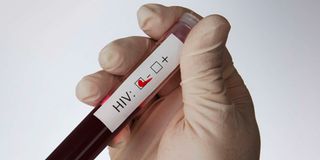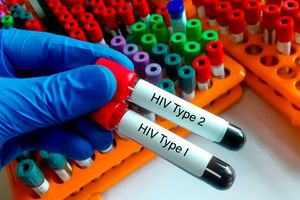World closer to HIV cure than ever before after Australian researchers’ breakthrough

HIV’s biggest challenge has been its ability to hide and remain dormant in pockets of healthy immune cells, specifically CD4+ T-cells, making it nearly impossible for drugs or the immune system to fully eradicate it.
What you need to know:
Late last year, Kenya reported a TB/HIV co-infection rate of 25 per cent, an increase from 23 per cent in 2022, the annual report by the National Tuberculosis, Leprosy and Lung Disease programme showed.
Kisumu, Homa Bay, Siaya and Busia had the highest co-infection rates at 57 per cent, 53 per cent, 52 per cent, and 40 per cent, respectively.
The more than 1.3 million people living with HIV/Aids in Kenya could in the near future breathe a sigh of relief after researchers working on a cure earlier this month found a novel way to expose the virus hiding deep within human immune cells.
HIV’s biggest challenge has been its ability to hide and remain dormant in pockets of healthy immune cells, specifically CD4+ T-cells, making it nearly impossible for drugs or the immune system to fully eradicate it.
The Australian researchers developed a novel mRNA-based technology capable of reaching the white blood cells where HIV lies dormant, bringing the world one step closer to a potential cure for the virus.
Using lipid nanoparticles (LNPs ) — special kind of ‘fat bubbles’ - the researchers created a new version known as LNP X, specifically designed to enter the elusive white blood cells. Once inside, the mRNA signals the cells to reveal the virus, making it visible for the first time.
Also read: Twice-yearly injection for HIV prevention approved – what you need to know about lenacapavir
This, the researchers say, has been the biggest challenge in developing HIV cure considering the fact that the virus can hide in certain white blood cells.
This also makes it almost impossible for the immune system or even stronger medication to detect and destroy the virus.
mRNA stands for messenger RiboNucleic Acid and is the single stranded molecule that carries the instructions to make proteins.
It has a fundamental and essential role that makes our bodies function and is found in all living cells.
LNPs, according to the scientists, are an emerging vehicle for gene delivery that accommodate both nucleic acid and protein.
The scientists add that once inside, the mRNA instructs the cells to reveal the concealed virus, potentially allowing the immune system or additional therapies to target and destroy it completely.
“While antiretroviral therapy (ART) effectively inhibits active HIV replication and reduces morbidity and mortality, it is not curative and treatment is life-long.
The major barrier to HIV cure is the persistence of latently infected, resting CD4+ T cells harbouring replication-competent virus,” the study highlighted.
HIV primarily targets and destroys CD4 T cells, which are crucial for a healthy immune system. These cells, also known as CD4+ T cells or helper T cells, are vital in coordinating the body's immune response against infections.
Weakening immune system
The virus uses components of the CD4 cell to replicate and spread, leading to a decline in the number of these cells and ultimately weakening the immune system.
According to Paula Cevaal, a research fellow at the Doherty Institute and co-first author of the study, this remarkable scientific feat was “previously thought impossible.”
He adds that their findings were so surprising that they repeated their experiments so many times to confirm what they had observed.
While it could take years to get to human clinical trials — the implications of their findings are enormous and vital in the quest for a cure.
“In the field of biomedicine, many things eventually don’t make it into the clinical trial — that is the unfortunate truth; I don’t want to paint a prettier picture than what is the reality,” Cevaal highlighted.
“But in terms of specifically the field of HIV cure, we have never seen anything close to as good as what we are seeing in terms of how well we are able to reveal this virus,” Cevaal added while reacting to their peer-reviewed findings published in Nature, one of the most respected global scientific journals.
“Recent advances in mRNA and LNP technology have allowed for the development of new vaccines and therapeutics, holding great promise for gene therapy,” the study notes, adding that the same platform has since been used to deliver mRNA to generate two of the most effective vaccines against Covid-19 (Comirnaty (Pfizer/BioNTech) and Spikevax (Moderna)).
“More recently, LNPs have been used to deliver mRNA for CRISPR-Cas9 gene editing in vivo, which was found to be safe in human clinical trials.
These advances have triggered enormous interest in the use of mRNA-LNPs as versatile therapeutics, including for infectious diseases such as HIV,” the researchers explained.
Late last year, Kenya reported a TB/HIV co-infection rate of 25 per cent, an increase from 23 per cent in 2022, the annual report by the National Tuberculosis, Leprosy and Lung Disease programme showed.
Kisumu, Homa Bay, Siaya and Busia had the highest co-infection rates at 57 per cent, 53 per cent, 52 per cent, and 40 per cent, respectively.
The data also showed low co-infection rates in counties of Baringo at 14 per cent, Mandera three per cent and Wajir one per cent.
The highest antiretroviral therapy uptake was recorded in 2023 at 98.2 per cent, compared to 97 per cent in 2022. This high uptake has been maintained from 2019 to 2023.


